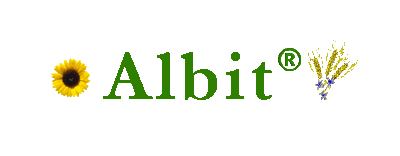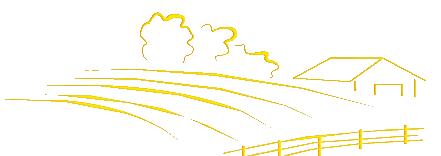|
|
Materials used in this chapter were published in the book Biostimulant Albit for increasing yields and protection of agricultures against diseases, A.K. Zlotnikov, Ed. Prof. À. Melkumova. All-Russia Institute of Plant Protection, Russia, 2006.
Small-seeded beans are a valuable fodder crop for domestic animals. 1 kg of grain contains 1.29 fodder units, which contain 230-300 g of digestible protein. Beans have a high nutritional value: bean protein content is 3.5 times higher than that of oats, 2 times higher than of vetch-oat mixture. The green mass of beans also has a high fodder value. Each feed unit of green mass contains up to 130-140 g of protein, which is 1.5-2 times higher than in the green mass of maize. On fodder beans, Albit is applied as antidote for decrease of side phytotoxic effect of pesticides on the crop. In Russia, Albit is officially registered as a plant growth regulator of fodder beans. Albit increases field germination capacity, accelerates plant growth and development, improves plant resistance to unfavorable conditions of the environment, provides defense against plant diseases. Albit increases fodder beans yield and improves yield quality. Field trials investigating effect of Albit upon common beans have been conducted since 2001 in All-Russia Research Institute of Legumes and Groat Crops (Oryol oblast), All-Russia Institute of Vegetable Selection and Seed Breeding (Moscow oblast), in UAB Kustodija (Lithuania), in Latvia on experimental plots of State Institute of Breeding of Field Crops in Priekule and Stende and also in other institutes and farms. Albit was applied on fodder beans var. Orletskii (small and average seeded beans), Boxer and others. According to results of long-term field trials, Albit increases fodder beans yield by 0.3 t/hà (8.4% to control). Depending on year, variety, region and method of application, yield increase varied from 0.04 to 0.63 t/hà. Application recommendations. Seed treatment (50 mL/t) and foliar spraying with Albit at the budding stage (30 mL/hà) are recommended for maximal effect. For induction of long-term resistance to herbicide stress and diseases, application rate of Albit may be increased up to 100-150 mL/t. Albit may be applied as antidote in tank mix with pesticides according to their respective recommendations; in this case 2-fold spraying with Albit is recommended. Seed treatment with Albit increases seed germination, reduces infestation with diseases (Fig. 1).
Fig. 1. Positive influence of seed treatment with Albit on fodder bean germination. 1 – Control, 2 – Seed treatment with Albit (All-Russia Research Institute of Legumes and Groat Crops, Oryol oblast, 2007)
Pot experiments of 2015 in UAB Kustodija (Lithuania) shown that seed treatment with Albit (150 mL/t) increases germination by 12.5% relatively to control. 10-day germs had average root length and height of above ground part higher than in control by 70.3% and 29.1%, respectively (Fig. 2). Increase of green mass relative to a control was 77.2%, dry weight – 86.4%.
Fig. 2. Influence of seed treatment with Albit on development of the germs of fodder beans on the 10th day of growth. Left – control, right – treatment with Albit (UAB Kustodija, Lithuania, 2015)
In 2001, fodder beans were seed treated and then sprayed with Albit at the budding stage (50 mL/t + 30 mL/hà) in a field trial of All-Russia Institute of Vegetable Selection and Seed Breeding. Field germination was increased in variant with Albit (ca. by 5%). Accelerated growth and increased sprout height (ca. by 10% over control) were observed on 2nd-5th days after foliar sprays. On treated plots, blossoming began 2-3 days earlier than in control. Yield in control was 1.21 t/hà (the data are given to a standard humidity). Albit increase fodder beans yield by 0.19 t/hà (15.7% to control). Albit was applied in system of standard and organic cultivation in Latvia (Priekule, Stende, 2015). Standard cultivation included application of the main fertilizer (NPK), seed treatment with chemical pesticide, treatment with herbicide at the stage of 4-6 true leaves (ÂÂÑÍ 14-16) and fungicide (ÂÂÑÍ 55-59). In course of the trials, Albit was added to these pesticide treatments (150 mL/t, 40 mL/hà). Climatic conditions of the growing season in 2015 were favourable for crop cultivation: moisture availability was optimal during emergence and seed formation. Plant growth continued until the end of August. Yield in control was 6.86 t/hà. In all trials, yield was higher than in control. Maximal result was 7.31 t/hà (yield increase to control was 0.45 t/hà, 7%) in variant with 3-fold Albit application: seed treatment + foliar spraying with herbicide + foliar spraying with fungicide. In this variant maximal protein content in pods was 30.87%. There were no chemical treatments in organic cultivation system. Control plots were without application of plant protection products. In trial plots, Albit was applied during seed treatment (150 mL/t) and foliar spraying at the blossoming stage (ÂÂÑÍ 60-61, 40 mL/hà). In this set of trials, yield of fodder beans was 2.52–4.12 t/hà (lower than in standard cultivation). However, all treatments gave yield increase to control: 0.04–0.63 t/hà (1.6–17.1%). Commercial yield increased by 5.3–9.3% over control, weigh of 1000 seeds and plant height were also increased after Albit application. In 2017, the first results of Albit application on fodder beans were obtained in Malaga (Spain). In conditions of very early and hot spring and summer drought, application of Albit with chemical pesticides and fertilizers gave yield increase 16.8% over variant without Albit. Farmers noted that plants treated with Albit (40 mL/hà) had accelerated growth, formed more flowers and pods with larger size (Figs. 3, 4).
Fig. 3. Difference in development of fodder bean plants: 14 days after foliar spraying with Albit (40 mL/hà) + fungicide + fertilizers and amino acids (right), in comparison with foliar treatment with the same mixture without Albit (left) (Malaga, Spain, 2017)
Fig. 4. Influence of Albit on growth and development of fodder beans. Left – control without Albit, right – treatment with Albit (Malaga, Spain, 2017)
In the following Table, you may see all reports on performance of Albit on fodder beans, available in English. For all available reports, please see corresponding table on the Russian webpage:
|
|
|||||||||||||||||||||||||||||||||||||||||||||||||||||||||||||||||||||||
Terms and Conditions
|
|


 Fodder
(common) beans are a valuable vegetable, fodder and green manure crop. In Russia,
fodder beans are mainly used as fodder crop. In other countries, especially
in South-West and Asian Near East, as well as in the Mediterranean countries,
common beans are an important source of protein. Pods contain 26-34% protein,
0.8-1.5% fat, 50-55% carbohydrates. Stems of beans are more nutritious than
oat straw and contain up to 10% protein.
Fodder
(common) beans are a valuable vegetable, fodder and green manure crop. In Russia,
fodder beans are mainly used as fodder crop. In other countries, especially
in South-West and Asian Near East, as well as in the Mediterranean countries,
common beans are an important source of protein. Pods contain 26-34% protein,
0.8-1.5% fat, 50-55% carbohydrates. Stems of beans are more nutritious than
oat straw and contain up to 10% protein. 




